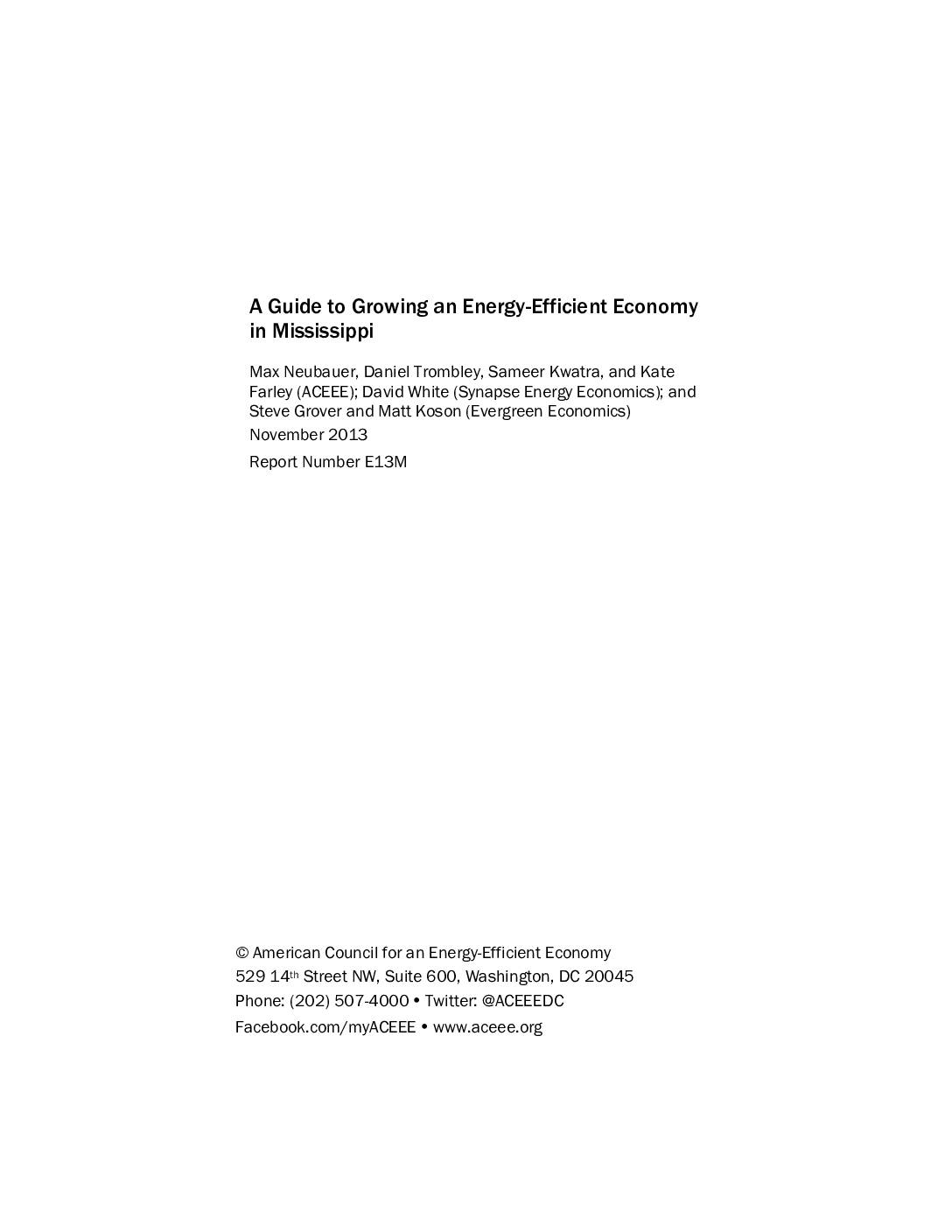Mississippi has built a solid foundation for energy efficiency in the last year, such as the passing of energy efficiency rules at the Mississippi Public Service Commission and the adoption of ASHRAE 90.1-2010 standards for commercial building energy codes. The intent of this report is to identify strategic, actionable opportunities for Mississippi to consider to expand and perpetuate its energy efficiency efforts over the next decade.
This report examines the potential energy savings and economic growth that Mississippi could realize from the implementation of a suite of sixteen programs and policies between 2014 and 2025. The report finds that Mississippi can cost-effectively meet 4.4% and 3.2% of its electricity and natural gas demand by 2020, growing to 12.8% and 9.8% by 2025. The macroeconomic assessment finds that, by 2025, these savings will result in $4.3 billion in net economic output, including $1.1 billion in wages, $825 million in income to small business owners, 32,800 person-years of employment, and increased state and local tax revenue by $80 million.
Our analysis finds that, as the least-cost resource, energy efficiency will benefit all customers and play a major role in bolstering economic development. With sustained leadership in the public and private sectors as well as effective policy and program implementation, Mississippi will undoubtedly be successful.
Share this

Sectors: Buildings, Cross cutting, Industry, Power sector, Renewables
Country / Region: Northern America, United States
Tags: Building Energy Codes, building types, commercial buildings, corporate reporting, economic growth, energy, energy efficiency, energy savings, implementationKnowledge Object: Publication / Report
Published by: ACEEE
Publishing year: 2013
Author: Max Neubauer, Daniel Trombley, Sameer Kwatra, Kate Farley
